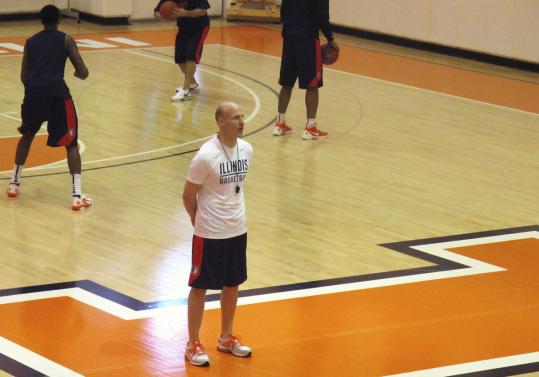Big Ten Team Preview: Illinois Fighting Illini
Posted by Deepak Jayanti on October 22nd, 2012Throughout the preseason, the Big Ten microsite will be rolling out these featured breakdowns of each of the 12 league schools. Today’s release is the Illinois Fighting Illini.
Where we left off: The last two months of the 2011-12 season were just an absolute mess for the Illini. After beating Ohio State at home on January 10, Bruce Weber’s team ended the season in a major slump (2-12) to finish with a record of 17-15. Weber clearly had lost complete control of his team and was fired after the Big Ten Tournament. The Illini did not even get invited to play in the NIT amidst the chaos and the coaching search created even more negative press coverage for the program. VCU’s Shaka Smart reportedly rejected the job offer and rumors about Brad Stevens’ interest in the opportunity were squashed immediately. Nonetheless, the Illini hired an excellent young candidate, former Thad Matta assistant John Groce from Ohio University. Groce brings a much-needed positive attitude to the program and hopes to instill some new energy, and more importantly, toughness into the program.
Positives: Bruce Weber recruited quality talent to Champaign over the past three seasons. Guards Brandon Paul, D.J. Richardson and Tracy Abrams were all top 100 recruits in their class coming out of high school. Weber did not fully utilize Paul’s athleticism but the junior exhibited his offensive versatility as he averaged a team-leading 14.7 PPG last season. John Groce’s success at Ohio has been driven by an up-tempo, guard-oriented offense and requires a backcourt who can not only shoot the ball but also consistently attack the basket. Paul and Richardson’s experience will be helpful if they can buy into Groce’s system which is not as stringent as Weber’s motion offense that revolved around several set plays. Abrams only averaged 4.3 PPG last season but showed his maturity during the season of turmoil. Illini fans have been waiting for an offense that will let the guards facilitate drives to the hoop and make plays rather than adherence to drawn plays that revolve around the perimeter.










































